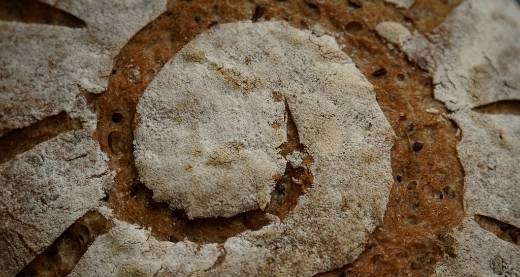|
 An illustrative case happened once in Vienna. A three-year-old girl named Margo was attacked by an evil shepherd dog. The dog used its terrible fangs, Margot screamed from unbearable pain, and ... it is not difficult to imagine how this drama would have ended if help had not arrived in time. An illustrative case happened once in Vienna. A three-year-old girl named Margo was attacked by an evil shepherd dog. The dog used its terrible fangs, Margot screamed from unbearable pain, and ... it is not difficult to imagine how this drama would have ended if help had not arrived in time.
Like an angry tigress, the cat Mickey jumped on the head of the shepherd dog. She grabbed the dog with her teeth and claws, trying to get to the eyes - the most vulnerable place. Mickey saved her little mistress, but after the fight she had very little chance of surviving. Caring doctors still managed to put the cat on its feet, and Mickey, who instantly became a celebrity, was awarded a medal for saving a child.
In the Serbian city of Arilje, the cat Marko saved the life of a schoolgirl Stana Dragovic by killing a viper.
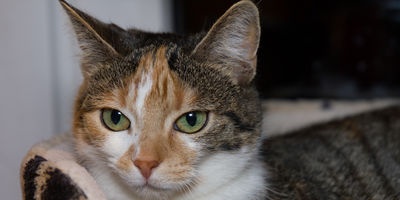 A similar incident happened in the house of the Tajik peasant D. Aliyev from the Leninsky District. Here is what the newspaper reported: “In the evening, the head of the family told his daughter Mastura to bring dishes for dinner from the kitchen. When she reached out to the cupboard for the teapot and bowls, a snake fell from the cupboard onto her. Mastura cried out in fear. And then the cat jumped on the snake. A desperate struggle ensued. The owner of the house hastened to help, but the cat recovered with the snake himself, having bitten its neck. The snake turned out to be poisonous, its bites would be fatal. A similar incident happened in the house of the Tajik peasant D. Aliyev from the Leninsky District. Here is what the newspaper reported: “In the evening, the head of the family told his daughter Mastura to bring dishes for dinner from the kitchen. When she reached out to the cupboard for the teapot and bowls, a snake fell from the cupboard onto her. Mastura cried out in fear. And then the cat jumped on the snake. A desperate struggle ensued. The owner of the house hastened to help, but the cat recovered with the snake himself, having bitten its neck. The snake turned out to be poisonous, its bites would be fatal.
In 1960, in the English city of Lancaster, the cat Passy distinguished himself. A fire broke out in the apartment where one sick six-year-old boy remained. Alarmed, Passy rushed to the open window and jumped down from the height of the third floor. Then she, loudly and incessantly meowing, ran down the street and at the same time looked back and forth in the direction of the burning house. Passers-by noticed the unusual behavior of the animal and managed to call the firefighters in time.
But, of course, most of all examples of this kind are associated again with the dog tribe.
In the Polish city of Gdynia, the dog Morus saved a completely unfamiliar child who ran out onto the pavement right under the wheels of a car. Morus jumped and threw the baby to the side with his head. The dog himself was hit by a car, but the doctors managed to get out, and Morus became known throughout Poland.
In Nome, Alaska, there is a bronze monument to the dog Balt. On the days when a terrible epidemic of diphtheria raged in the snow-covered city, Balt in a storm and severe frost for five days broke through with his team through the drifts and delivered anti-diphtheria serum to people in trouble. The epidemic was stopped and many lives were saved.
The St. Bernard named Barry, who rescued people in the Swiss Alps, near the St. Gotthard Pass, gained truly world fame.
On the roads of the highlands, the traveler is constantly in danger of being buried under the snow. Many cases have been registered when lumberjacks and hunters, children returning from school, sportsmen-skiers, tourists got into avalanches. In such cases, specially trained avalanche dogs provide invaluable assistance to rescue teams. One of them was St. Bernard Barry - a wonderful dog, a champion dog, on whose account there were forty saved.
When Barry died, a monument was erected to him in Paris, in the dog cemetery near the Clichy bridge. The description of this monument was left in the sketch "Barry" by the Russian writer A. I. Kuprin:
“A large, high-rise monument. Against the background of a rocky mountain stands a large, powerful dog ... His forehead is cut with a deep vertical wrinkle. The look is steadfast and serious. The child girl clung to the dog, hugged it and smiled happily: The signature on the plinth reads:
"Barry, St. Bernard. Saved the lives of forty people ...".
About the nature of the service Barry gives an idea of the following statement, belonging to one of the great connoisseurs of dogs - Sheitlin:
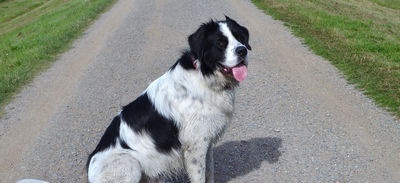 “The most glorious of the dogs was ... Barry, the beneficent dog of St. Bernard Monastery! You were a great, humane dog, you had compassion for the unfortunate! You saved the lives of over forty people! With a basket around your neck, where there was bread and a bottle with sweet, life-giving moisture, day after day, you left the monastery in a snow storm and bad weather to look for people brought in by the snow and covered with an avalanche. If you yourself could not open them, you hurried home to call for help from the monks with shovels ... You, as a sympathetic person, knew how to silently inspire confidence in yourself, otherwise the little boy you dug out of the snow would never dare climb onto your back so you can carry him to the hospitable monastery. Arriving at the gates of the monastery ... you rang the bell in order to quickly convey the sweet find to the care of the good brethren. As soon as they took off your expensive burden, you again hurriedly set off on a new quest. Each successful salvation made you more and more experienced and more experienced, you became more and more satisfied, you showed more and more participation in the unfortunate. " “The most glorious of the dogs was ... Barry, the beneficent dog of St. Bernard Monastery! You were a great, humane dog, you had compassion for the unfortunate! You saved the lives of over forty people! With a basket around your neck, where there was bread and a bottle with sweet, life-giving moisture, day after day, you left the monastery in a snow storm and bad weather to look for people brought in by the snow and covered with an avalanche. If you yourself could not open them, you hurried home to call for help from the monks with shovels ... You, as a sympathetic person, knew how to silently inspire confidence in yourself, otherwise the little boy you dug out of the snow would never dare climb onto your back so you can carry him to the hospitable monastery. Arriving at the gates of the monastery ... you rang the bell in order to quickly convey the sweet find to the care of the good brethren. As soon as they took off your expensive burden, you again hurriedly set off on a new quest. Each successful salvation made you more and more experienced and more experienced, you became more and more satisfied, you showed more and more participation in the unfortunate. "
In the pre-war years, the Caucasian Shepherd Dog Topusha was called the best shepherd's dog in Georgia, which BS Ryabinin told about in the book "My Friends". The track record of this guardian of sheep flocks included more than a hundred strangled wolves.
Here is how Ryabinin describes an episode in which, defending a lamb that had strayed from the flock, Topush bravely accepted a battle with eight predators:
“Putting the lamb on its legs, blocking it with himself, he turned to the approaching flock and prepared for battle. His body tensed, sagging slightly backward, his fur reared, his eyes sparkled with a wild glint. Baring deadly fangs, he let out a loud, abrupt barking or howl. It was his battle cry, a warning to his enemies that the fight would be death and not life. His menacing voice carried along the gorge and died away in the distance.
The flock was already close. The two wolves stepped forward, approaching with elastic light leaps. Topush backed away, his muscles contracted, and suddenly, like a cannonball thrown out of a cannon, he darted towards the predators. In a terrible blow, the wolf and the dog collided. The bones cracked. The wolf flew into the air like a sack and, having flown over the edge of the cliff, fell into the abyss.
Without giving in to his senses, Topush attacked the second enemy, and the second predator with a broken chest rolled down. But there were still six left.
The three wolves sat down for a moment, then all three jumped at once. Four bodies intertwined into one snarling ball. A second later, the ball fell apart. Two wolves and a shepherd bounced in different directions, a third wolf fought on the ground. Topush's paw was bitten.
The wolves retreated, not daring to attack any more. One licked the torn side, the other shook his head. On the sharp thorns of the shepherd's collar, he tore his mouth.
Topush cast a quick glance around him, and a triumphant howl escaped his throat. The dog's sharp little eyes made out, against the light green background of the valley, deep below, rapidly approaching yellow, brown and gray lumps. They jumped like balls and grew rapidly. Sheepdogs! The pack heard the call of the leader and hurried to the rescue.
The wolves also saw them and rushed scattering ... "
The champion in a different role was considered the most popular dog in Italy, named Dox. This shepherd dog worked for many years in the Roman detective police and surpassed in his art such famous colleagues in the profession as Rex from the English Scotland Yard and Xoro, who served in the Paris detective police.
Four hundred malefactors helped arrest Dox.
He participated in one hundred and sixty deadly battles and received seven gunshot wounds. Four gold and twenty-seven silver medals were received by the champion as a reward for dangerous work.
Perhaps the most phenomenal of Dox's many years of career was the sensational “Lost Button Case”.A robber entered one of the jewelry stores in Rome, but was discovered by a night watchman. After a short fight, the criminal managed to escape. Dox was summoned to the scene. The dog carefully sniffed the watchman's clothes and ... led the police to some basement on the other side of the city. The door was opened by the sleepy owner, who, having learned about the reason for the visit of the police, began to assure that he was absolutely innocent. Then let us give the floor to the direct participant in the operation, Sergeant Maimone: “I was ready to believe him, especially when the watchman did not recognize him as a bandit who attacked him in a jewelry store. I then signaled to Dox to take a closer look at everything. Dox barked and ran out of the basement. The police followed him. Dox ran to the jewelry store. There he picked up a button from the floor and gave it to me. Then he barked and ran back to the basement we were already in. This time Dox sniffed the closet in the room, pawed the door open, stood on his hind legs, and took his raincoat off the rack with his teeth. The button Dox found was from that cloak. The scraps of fabric on the button that had come off were fully consistent with the fabric. The malefactor was forced to confess. "
In old age, a veteran of the detective service was retired with honor.
A stuffed animal of the Sultan's search dog is in the forensic museum in the northern capital. During his service in the criminal investigation department, the dog returned the stolen valuables worth more than two million rubles to their owners.
The famous Soviet border guard Nikita Karatsupa detained about five hundred violators. In this he was helped by the East European Shepherd Dogs.
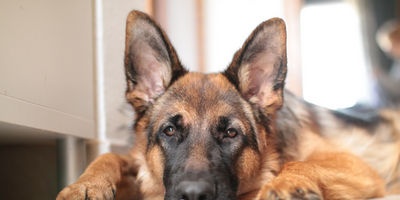 During the Great Patriotic War, our mine detector dogs helped to neutralize about 80 million enemy mines. The record belongs, probably, to the collie Dick: he has 12 thousand dangerous finds on his account. During the Great Patriotic War, our mine detector dogs helped to neutralize about 80 million enemy mines. The record belongs, probably, to the collie Dick: he has 12 thousand dangerous finds on his account.
All new and new "specialties" a man teaches his four-legged friends, and each of them has its own heroes, pioneers, champions, celebrities.
Shepherd Larry is considered the world's first geologist dog. Her training for the purpose of prospecting for minerals was begun in 1962, and two years later she successfully discovered pyrite, which lies either on the surface or shallow underground. The achievements of Lari and the owner of the dog, Pentti Mathsson, in the field of geology were marked in 1965 by a solid award of the Finnish State Council of 7,000 marks.
Now there are mining dogs in other countries. Our shepherd dog Murat (its owner - M.F.Schadey) was awarded the Certificate of Honor of the Petrozavodsk Institute of Geology.
In 1965, there were press reports about the extraordinary career of the Krista Shepherd of Frankfurt an der Oder. She was hired by the city gas network directorate as an inspector. Krista found gas leaks from an underground pipeline better than any device, and immediately a special repair team arrived at the scene of the accident. Later, dogs with a new-fangled specialty also appeared in the service of the Warsaw and Tallinn gas network offices.
Interestingly, Dingo, a Tallinn East European Shepherd Dog, served a stretch of 23 streets with a total length of 5713 meters! She was listed in the staffing table and "received" a state salary - 20 rubles a month (this is in addition to a special salary for the owner).
The dog is a domestic animal, besides it has the longest track record: after all, it was the first to be tamed by a man. And can an inhabitant of the sea - a savage dolphin - amaze our imagination, distinguish ourselves, earn the gratitude of people? Yes, imagine, maybe!
The story of the famous dolphins can start with the legend of Arion, told by the "father of history" Herodotus, who lived in the 5th century BC. The Greek singer-kifared returned by sea to his homeland after a successful tour in Italy. The ship crew was flattered by the wealth of the eminent passenger and decided to kill the singer. Arion asked permission to sing for the last time before his death.Attracted by his singing and playing the cithara, a flock of dolphins swam up to the ship. The music seemed to enchant the inhabitants of the sea. When Arion, having finished the song, threw himself overboard, one of the dolphins swam up to him and on his back brought him to Cape Matapan. Not knowing how best to thank his savior, the singer presented the local temple with a copper image of a dolphin with a man on his back.
This was the legend, which for a very long time was considered simply a beautiful fiction. However, the careful acquaintance of scientists with the lifestyle and habits of the mysterious dolphin tribe, as well as the events of our time, surprisingly similar to the story of Herodotus, made skeptics ponder.
Fifteen years ago, in Florida (USA), a dolphin brought to the shore a bather with whom a misfortune happened: at the depth, a spasm brought her legs together, she lost consciousness and began to drown.
In July 1959, the Rio Antaro ship sank from an explosion near the San Andreas Islands. People who were in the water were attacked by sharks, predators first of all rushed to the wounded, to the smell of blood. Dolphins averted the tragedy. A large flock of them pounced on the sharks and drove them away from the people in distress.
In June 1966, many newspapers went around the report about the incident with the Cairo resident engineer Mahmoud Wali. He was fishing in the sea. The wind suddenly increased. The boat was carried far from the shore. And then ... a huge wave knocked Vali off her feet. It was good that he had a life mattress on which he could at least hold out for a while. And so, noticing a man in trouble, a large flock of dolphins came to the rescue. The animals realized what exactly should be done: firstly, they surrounded Vali with a tight ring to eliminate the threat of shark attacks, and secondly, they began to push the mattress aggressively towards the shore. Day, night, another day, these amazing rescue operations continued, until Mahmoud Wali was finally able to set foot on his native land.
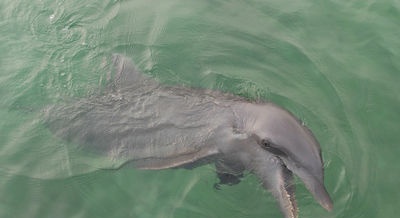 A lot of similar episodes have already been recorded, it is no coincidence that the very name "dolphin" is derived from the Greek "delphos" - "brother". In ancient Greece, killing a dolphin was equated with killing a person - for this, the death penalty was imposed. A lot of similar episodes have already been recorded, it is no coincidence that the very name "dolphin" is derived from the Greek "delphos" - "brother". In ancient Greece, killing a dolphin was equated with killing a person - for this, the death penalty was imposed.
In Russia (and in a number of other countries of the Black Sea region), a strict ban has been introduced on fishing for dolphins in the Azov-Black Sea basin - "intellectuals of the sea", as these cetaceans are often called, are under state protection.
In our century, dolphins made people talk about themselves more than once. For thirty-two years off the coast of New Zealand, a lone dolphin regularly carried the pilotage service, nicknamed Pelorus-Jack (from the small Pelorus Strait, where the dolphin was first noticed). Before each new vessel, which appeared in the channel teeming with reefs and shoals, the volunteer pilot diligently dived and jumped, indicating to the captain that the depth was reliable and it was possible to go forward without fear.
Sailing ahead and constantly changing direction on the bends of the treacherous fairway, Pelorus-Jack accompanied the ship through the entire strait, and there was not a single accident caused by the fault of an unusual pilot. The New Zealand government has adopted a special law to protect the sailors' mate. Pelorus-Jack was last seen in 1912, after which he disappeared.
Forty-five years later, however, a worthy successor to the Pelorus-Jack emerged in New Zealand's coastal waters. It was a bottle-nosed dolphin, the body length of which reached one and a half meters.
The dolphin was spotted in Hakyanga Harbor off the North Island, near the fishing village of Opononi. The name of the village gave rise to the dolphin's nickname - Opo-Jack.
Opo turned out to be an even greater virtuoso of the pilotage service than his famous brother Pelorus. He met fishing vessels on the open sea and then followed them to the shore. The dolphin confidently swam close to the ship, even rubbing against the hull. He let the fishermen stroke him and scrub his back with a mop.Once Opo-Jack got into the company of boys frolicking in the water and since then has become the most dexterous and fun participant in the ball game. Opo did not mind either to ride those who wish on his back.
The fame of the tame dolphin has spread almost all over the world. Hundreds of tourists, journalists, photographers, cameramen flooded into the previously unknown fishing village.
The common favorite died by an absurd accident: he fell under the blades of a motor launch and died of his wounds. The whole nation was in mourning. Opo-Jack's body, towed to the beach, was buried in the presence of a huge crowd of local residents; at the time of burial, the national flag of New Zealand was lowered. A decision was immediately made: to build a monument to Opo - a stone statue of a dolphin.
The fame of the dolphin named Tuffy is no less loud than that of its New Zealand relatives. Tuffy, properly trained in advance, for almost a month and a half uninterruptedly supplied the American oceanauts with mail - the inhabitants of the Sillab-2 underwater laboratory, located a kilometer off the California coast. Diving to a depth of 62.5 meters was a mere trifle for Tuffi. In addition to delivering mail in waterproof packaging, the dolphin also brought the necessary tools to the researchers. When one of them deliberately pretended to have lost his bearings in the opaque water, Tuffy swam up to him with a nylon line tied to his body and kindly escorted him to the underwater base. The "man at sea" experiment program was completed successfully.
Krasnopevtsev V.P. - Seagulls on a pedestal
Read now
All recipes
|
 An illustrative case happened once in Vienna. A three-year-old girl named Margo was attacked by an evil shepherd dog. The dog used its terrible fangs, Margot screamed from unbearable pain, and ... it is not difficult to imagine how this drama would have ended if help had not arrived in time.
An illustrative case happened once in Vienna. A three-year-old girl named Margo was attacked by an evil shepherd dog. The dog used its terrible fangs, Margot screamed from unbearable pain, and ... it is not difficult to imagine how this drama would have ended if help had not arrived in time. A similar incident happened in the house of the Tajik peasant D. Aliyev from the Leninsky District. Here is what the newspaper reported: “In the evening, the head of the family told his daughter Mastura to bring dishes for dinner from the kitchen. When she reached out to the cupboard for the teapot and bowls, a snake fell from the cupboard onto her. Mastura cried out in fear. And then the cat jumped on the snake. A desperate struggle ensued. The owner of the house hastened to help, but the cat recovered with the snake himself, having bitten its neck. The snake turned out to be poisonous, its bites would be fatal.
A similar incident happened in the house of the Tajik peasant D. Aliyev from the Leninsky District. Here is what the newspaper reported: “In the evening, the head of the family told his daughter Mastura to bring dishes for dinner from the kitchen. When she reached out to the cupboard for the teapot and bowls, a snake fell from the cupboard onto her. Mastura cried out in fear. And then the cat jumped on the snake. A desperate struggle ensued. The owner of the house hastened to help, but the cat recovered with the snake himself, having bitten its neck. The snake turned out to be poisonous, its bites would be fatal. “The most glorious of the dogs was ... Barry, the beneficent dog of St. Bernard Monastery! You were a great, humane dog, you had compassion for the unfortunate! You saved the lives of over forty people! With a basket around your neck, where there was bread and a bottle with sweet, life-giving moisture, day after day, you left the monastery in a snow storm and bad weather to look for people brought in by the snow and covered with an avalanche. If you yourself could not open them, you hurried home to call for help from the monks with shovels ... You, as a sympathetic person, knew how to silently inspire confidence in yourself, otherwise the little boy you dug out of the snow would never dare climb onto your back so you can carry him to the hospitable monastery. Arriving at the gates of the monastery ... you rang the bell in order to quickly convey the sweet find to the care of the good brethren. As soon as they took off your expensive burden, you again hurriedly set off on a new quest. Each successful salvation made you more and more experienced and more experienced, you became more and more satisfied, you showed more and more participation in the unfortunate. "
“The most glorious of the dogs was ... Barry, the beneficent dog of St. Bernard Monastery! You were a great, humane dog, you had compassion for the unfortunate! You saved the lives of over forty people! With a basket around your neck, where there was bread and a bottle with sweet, life-giving moisture, day after day, you left the monastery in a snow storm and bad weather to look for people brought in by the snow and covered with an avalanche. If you yourself could not open them, you hurried home to call for help from the monks with shovels ... You, as a sympathetic person, knew how to silently inspire confidence in yourself, otherwise the little boy you dug out of the snow would never dare climb onto your back so you can carry him to the hospitable monastery. Arriving at the gates of the monastery ... you rang the bell in order to quickly convey the sweet find to the care of the good brethren. As soon as they took off your expensive burden, you again hurriedly set off on a new quest. Each successful salvation made you more and more experienced and more experienced, you became more and more satisfied, you showed more and more participation in the unfortunate. " During the Great Patriotic War, our mine detector dogs helped to neutralize about 80 million enemy mines. The record belongs, probably, to the collie Dick: he has 12 thousand dangerous finds on his account.
During the Great Patriotic War, our mine detector dogs helped to neutralize about 80 million enemy mines. The record belongs, probably, to the collie Dick: he has 12 thousand dangerous finds on his account. A lot of similar episodes have already been recorded, it is no coincidence that the very name "dolphin" is derived from the Greek "delphos" - "brother". In ancient Greece, killing a dolphin was equated with killing a person - for this, the death penalty was imposed.
A lot of similar episodes have already been recorded, it is no coincidence that the very name "dolphin" is derived from the Greek "delphos" - "brother". In ancient Greece, killing a dolphin was equated with killing a person - for this, the death penalty was imposed.




